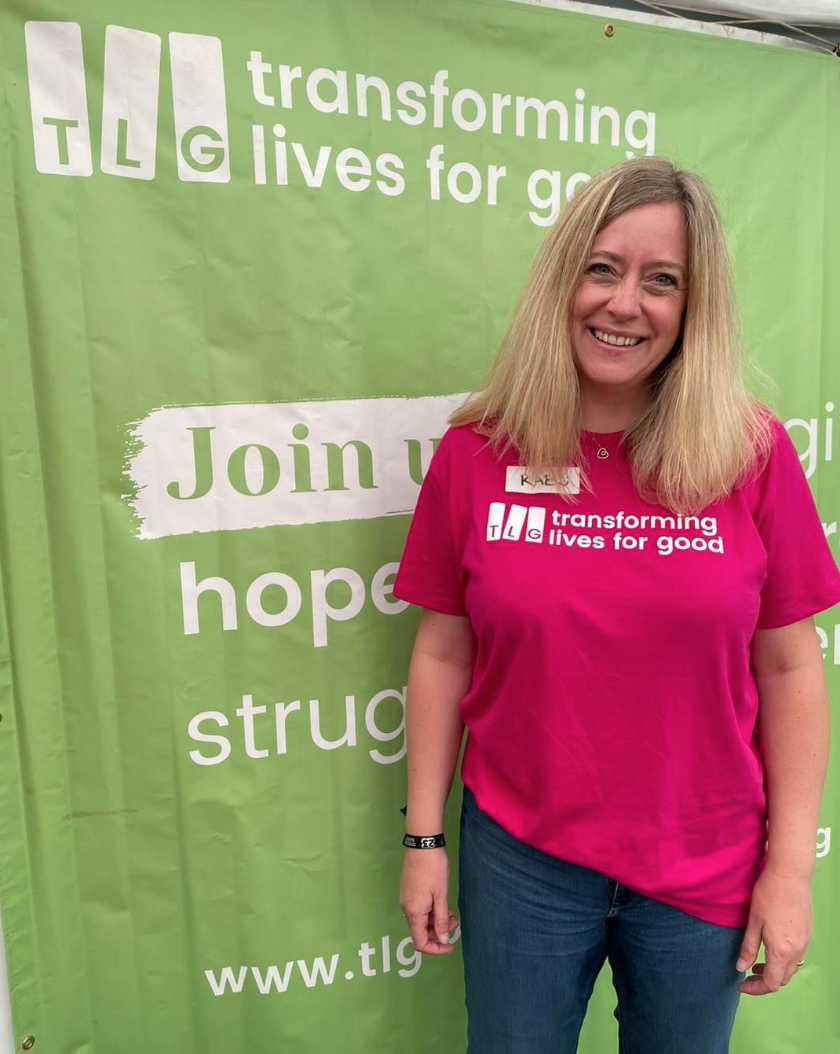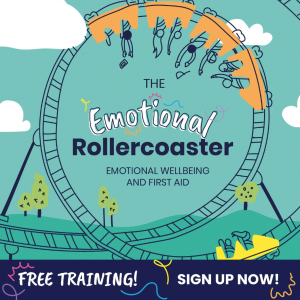Phone: 01825 769000 | Email: info@springharvest.org
Phone: 01825 769000 | Email: info@springharvest.org

‘What an emotional rollercoaster that was!’ has been a frequent refrain around me, particularly over the last few years.
Being a mum, auntie and working with many children and teens over the years - it’s probably been about 30! (not that I’m counting) - it means that I’ve never been very far away from emotional disturbances needing my response in some way or other. It’s got me really curious about training, growing and developing in emotional health for myself and for the healthy development of children in my community. It’s also found me reading my Bible with a ‘How did Jesus handle emotions?’ question too.

We could start by asking, ‘What are emotions?’ A quick google dictionary search results in definitions from Oxford Languages that inform me:
“Emotion – ‘a strong feeling deriving from one’s circumstances, mood, or relationships with others’ and ‘instinctive or intuitive feeling as distinguished from reasoning or knowledge’.”
As I scroll down the results of my question to Google ‘What are emotions?’ I begin to see that there are many definitions from a myriad of organisations each attempting to define emotions, feelings and the relationship between these and our physical, psychological, spiritual and sociological aspects of self.
In our therapeutic work at TLG we talk about emotions being like signals or indicators of holistic wellbeing. When we feel happiness it’s often in response to a person or circumstance where we feel safe and connected to someone or something. In that moment we don’t necessarily think: ‘Oh I think I’ll be happy now’ – we just are.
When we feel angry it’s often in response to a person or circumstance where we or someone we care about is not feeling safe or connected. We’re not thinking: ‘I’m going to be angry now’ – we just are.
What we seek to support children with are the choices about how to manage their emotions that come and go, are high or low, are big or small in any given day.
How can they accept, observe and respond to their emotions in a healthy way? It was in response to these questions that I wrote the TLG resource ‘The Emotional Rollercoaster’.
It’s a resource book for adults who support children and teens in their church community or local school. I think as children, youth and family workers we owe it to ourselves, and those we support, to grow in our emotional health and really get to grips with healthy ways of managing our own emotional spectrum so that we can be role models to those we’re sharing life with. The Emotional Rollercoaster brings support for this and equips the user to bring 15 sessions to groups of children and teens that help them get to grips with emotions through interactive and reflective activities.
They might not be able to choose their emotions but there are choices to make surrounding them and strategies to take as we go through them together.

So, there are a number of ways to look at this! What I’d like to highlight is the fact that all children are emotional. They have emotions and have been equipped with their own emotional signal system – it’s all about the relationship each child has with their emotions that differs from person to person. Some of the obvious differences can be related to personality - the parts that are expressive or extrovert versus quiet and introverted - the degree and context they’re in as well as the circumstances they’re facing. Less obvious differences may be linked to younger childhood and the permission given or not given when it came to expressing emotions and the legacy this brings.
“Emotions can be complicated at the best of times. If something goes wrong right at the beginning of someone's life things can often feel painful and confusing.” K L Aspden – ‘Help! My Feelings are too Big.’
We can often think that because a child or teen is generally quiet that they’re probably not that emotional or that they have their emotions under control. However it could be, for reasons touched on above, that they are suppressing the emotions they feel and causing their body or mind to go into overdrive in their attempts to keep them subdued.
Giving children space to learn about emotions, observing them and accepting them in a caring and relational culture, can really help to begin the journey of exploring ways to tame them with good control and safe expression.
When we read the Gospels in the Bible we can see that Jesus displayed the spectrum of emotions from delight and compassion to frustration and anger. In His anger He made a whip to clear the temple of those taking advantage of the poor. (John 2 v 14-17) An important premeditated, physical response to an emotional signal He felt about His house not being welcome to all. Imagine for a moment being there when He did that. It doesn’t read a polite exchange!
It might be helpful to remember that the brain continues to develop to the age of 25.
Emotions have a purpose in our children. Let’s take the time to understand what’s behind them by taking a posture of listening to really hear them whilst they are still learning the skill of control and expression from us.


Context is king when it comes to responding to the vast array of emotions our children are feeling. Can you think of a context where the emotions happy, excited and calm could look out of place or feel uncomfortable or inappropriate? The same for sad, angry and fearful?
Often where there may be a mismatch in emotions it is because of misunderstanding, assumption or ill-intent in any given context. The emotion in itself is the signal; it is the corresponding actions that may need to be attended to. In seeking to bring much needed instruction and boundaries to our children we can often vilify the emotion that fuels their actions rather than seek to understand why the emotion is there.
Keeping the companions of ‘truth’ and ‘grace’ together can make all the difference in helping children and teens navigate the emotions they find uncomfortable.
The truth might be: “Oh no, there’s a hole in the wall!” and the grace may be: “I know you were really mad, tell me about it…and then let’s talk together about how we can repair it.”
The truth might be: “I can see the cuts on your arm are sore” and the grace may be: “I see you and I really want to hear about the tough stuff you’re going through...let’s see together where we can go to get the support you need.”
The message of Jesus is this – while we were still getting it so wrong, Christ died for us to bridge the gap and make the cosmic repair through his death, so that we can be reconciled in relationship to him. (paraphrase of Romans 5 v 8)
He made the first move; He understands our plight and responds with love. He gives us the option to see him, accept Him and all He’s done for us. He then gives us the choice to enter into a relationship with Him, a relationship that brings life, love, healing and repair.
As we bring our everything to Jesus, He takes us on a journey of healthy growth into love, joy, peace, patience, kindness, goodness, gentleness, faithfulness and self-control. Everything we need to govern our physical, psychological, emotional, spiritual and relational selves.
My prayer is that we will grow in relationship with Jesus, that He will equip us for every good work and that as we support children and teens to do the same, The Emotional Rollercoaster resource will be a tool in the hands for any who are supporting children and teens into emotional health.
Rae Morfin is the founder of TLG Early Intervention and Head of Therapeutic Support, a qualified teacher and currently a trainee child psychotherapeutic counsellor. Rae is also the author of a number of child coaching resources for TLG including ‘The Emotional Rollercoaster’, ‘Emotional First Aid Youth Journal’ and co-author of the ‘Let’s think about…’ series for supportive adults in the lives of struggling children and young people.